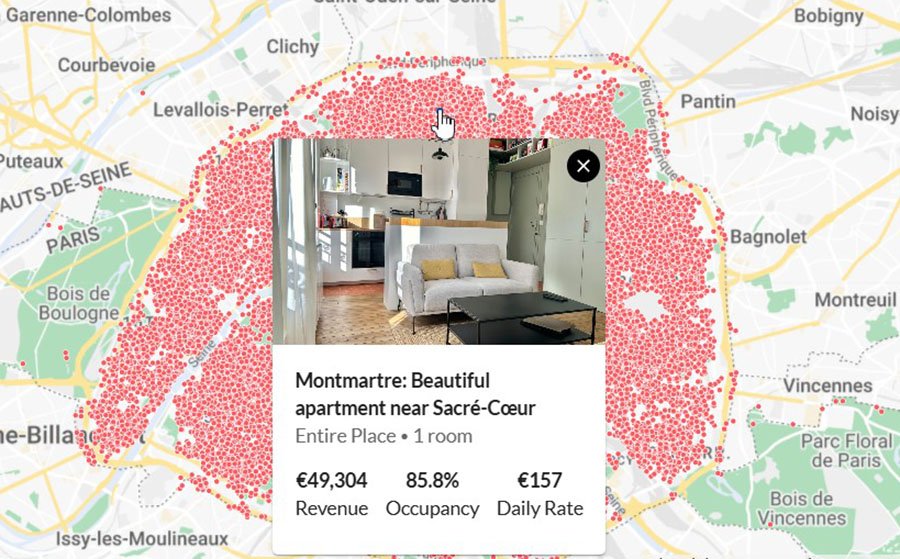читайте также
 The structure of workplace costs in Europe has shifted: Colliers
The structure of workplace costs in Europe has shifted: Colliers
 How Terrorism Is Reshaping Middle East Tourism in 2025: Risk, Resilience and Shifting Demand
How Terrorism Is Reshaping Middle East Tourism in 2025: Risk, Resilience and Shifting Demand
 Rental Market in Paris: Rate Dynamics, Occupancy, and Yields
Rental Market in Paris: Rate Dynamics, Occupancy, and Yields
 DHS Travel Ban Shock: How a Proposed Expansion to 32 Countries Could Disrupt Airlines, Tourism and U.S. Hospitality
DHS Travel Ban Shock: How a Proposed Expansion to 32 Countries Could Disrupt Airlines, Tourism and U.S. Hospitality
 Travel Surge 2025: How Lufthansa, Iberia and Hyatt Ignited Record Demand for Spain, Italy and the U.S.
Travel Surge 2025: How Lufthansa, Iberia and Hyatt Ignited Record Demand for Spain, Italy and the U.S.
 Hyatt Expands Boldly Across Portugal: Four New Hotels Set to Redefine Hospitality in 2025–2026
Hyatt Expands Boldly Across Portugal: Four New Hotels Set to Redefine Hospitality in 2025–2026
TOP of the Worst and Best Places to Live in Spain in 2025

Photo: Unsplash
Spain may seem like a dream — year-round sun, seafood, wine and a relaxed pace of life. But behind postcards and tourist brochures lies another reality. In some cities, living is difficult due to prices, crowds, heat or safety issues.
TOP-10 Worst Places to Live in Spain
Expat Guide Europe, based on official information from the National Statistics Institute (INE), has published the guide “10 Worst Places to Live in Spain – 2025”, which includes Spanish cities (or certain districts of major metropolitan areas) considered the least comfortable.
1. Barcelona – a city tired of tourists
Barcelona captivates with its culture and architecture, but residents pay a high price for its popularity. Tourist crowds, jammed streets, noise and inflated housing prices make life in the center difficult.
The districts of El Raval and Las Ramblas are known for pickpocketing and overcrowding. Those who want to stay should look for housing in quieter neighborhoods such as Gràcia or Poblenou.
2. Madrid – the capital of heat and hustle
Magnificent museums and business activity cannot compensate for the summer heat and noisy central streets.
In neighborhoods like Lavapiés, crime levels are above average, and summer temperatures reach 35°C and higher.
Madrid suits those willing to tolerate numerous hidden inconveniences for the sake of career opportunities and city life.
3. Marbella – luxury at the price of peace
Marbella lures with yachts and parties, but living here permanently is far from affordable.
Housing, restaurants and services cost more than the Spanish average, and in summer the city is overwhelmed by tourists.
For wealthy retirees and remote workers, it remains a sunny but expensive refuge.
4. Torrevieja – concrete instead of comfort
Torrevieja suffers from chaotic development and strong seasonality. In summer it’s too crowded; in winter, almost empty.
The local economy depends on tourism, and stable jobs are scarce. Only low housing prices and the hot summer climate make the city appealing for older people on a limited budget.
5. Málaga – bright, but not without shadows
Málaga has transformed over the past years into a cultural center of southern Spain. Its rising popularity has pushed housing prices upward.
However, some districts — for example, Palma-Palmilla — remain disadvantaged. The city suits those who want to live by the sea and are willing to overlook social contrasts.
6. Alicante – beautiful but unstable
A picturesque port city easily accessible from Europe. Yet behind its palm-lined beaches lie high unemployment and crime-prone northern neighborhoods.
Alicante suits freelancers and those looking for cheap coastal living without guarantees of stable income.
7. Seville – a paradise for tourists, a challenge for residents
Seville dazzles with beauty and atmosphere, but in summer becomes nearly unbearable — temperatures exceed 40°C.
Add air pollution and low salaries, and you get a city far less pleasant to live in than to visit. Still, culture, festivals and cuisine are remarkable.
8. Valencia – a victim of its own success
Valencia’s popularity is growing, along with prices and noise. The center is overcrowded with tourists, and nightlife disturbs the peace.
However, beyond the old town, you can find excellent neighborhoods with greenery, beaches and bike paths. Valencia remains attractive — but not for everyone.
9. Granada – a city of students and endless parties
Historic Granada blends Moorish architecture with a university-town spirit. But the abundance of students makes housing expensive and scarce, and the streets noisy.
Still, the city is loved for affordability and proximity to Sierra Nevada. It’s comfortable for young and active people — temporarily.
10. Palma de Mallorca – paradise with a high price tag
The island seems like a dream, but living here requires substantial funds. Housing prices exceed those in most cities of Spain, and in season the island is full of tourists and traffic jams.
Nevertheless, infrastructure, the sea and the old town make Palma desirable for those who can afford island life.
Why these cities made the anti-ranking:
high cost of living in tourist zones
overcrowded resorts in summer
petty crime in large cities
extreme heat in Andalusia
lack of stable jobs outside tourism
Advice for expats: test before you move
Spain is a country of contrasts. Before moving, spend at least a month in the chosen city, talk to locals, assess housing and transport. Only then can you understand whether the place suits you. The right regional choice determines everything — from comfort to your sense of happiness under the Spanish sun.
TOP-5 Best Places to Live in Spain
The authors of the guide also compiled a TOP-5 list of the best places to live in Spain. The basis included official INE indicators for healthcare, education, employment and more.
1. Navarre: health and a clean environment
The Navarre region is recognized as the best place to live in Spain. It combines high-quality healthcare, environmental sustainability and strong resident satisfaction.
Clean surroundings and an effective healthcare system make Navarre particularly appealing to families and foreign residents.
The only challenge is relatively high housing prices in Pamplona and nearby areas.
2. The Basque Country: education and income
In second place is the Basque Country, which shows the best performance in education and material wellbeing. Bilbao, San Sebastián and Vitoria-Gasteiz lead in school quality and salary levels.
High housing demand and limited supply push prices upward, but the strong economy and innovation sectors make the region attractive for skilled professionals.
3. La Rioja: stability and social balance
La Rioja remains one of the most balanced regions of Spain. It offers a favorable ratio between living costs and income levels, as well as developed infrastructure and a safe environment.
4. Asturias: leader in safety
Asturias has the highest score for personal safety. Its calm atmosphere, green areas and stability make it ideal for families and retirees.
5. The Islands: growth and new opportunities
The Balearic and Canary Islands showed the most significant improvement. Their economies are recovering thanks to the service sector and tourism.
Despite seasonal labor markets and fierce housing competition in summer, these island regions remain popular among expats due to their mild climate and dynamic development.
General Trends of 2024
INE reports growth across most areas — from healthcare to education and ecology. However, indicators of leisure and social connection declined, pointing to reduced public engagement. Still, overall quality of life remains high, and northern regions continue to strengthen their status as the best places to live in Spain.





